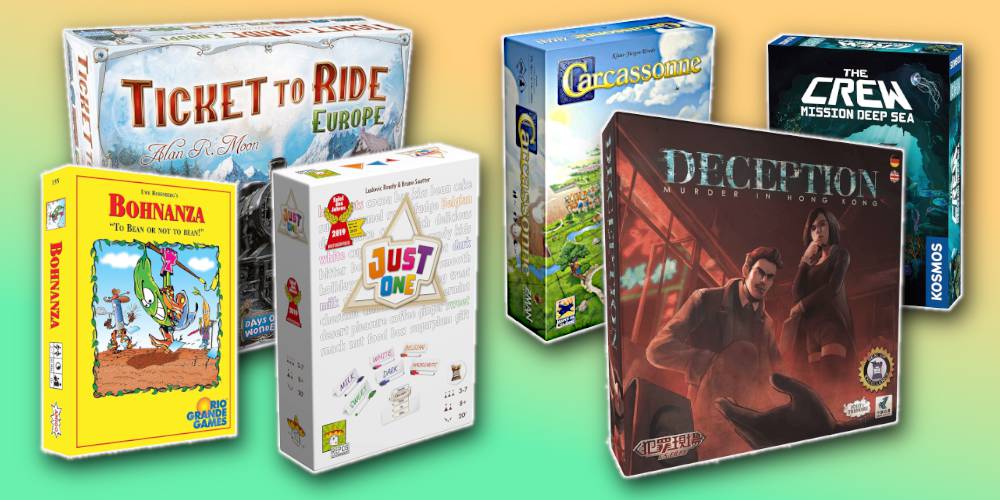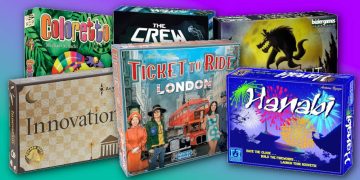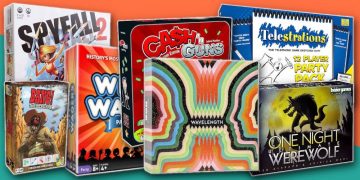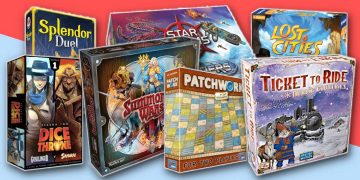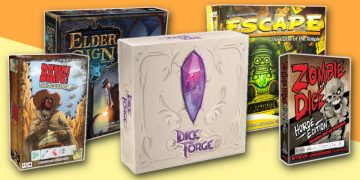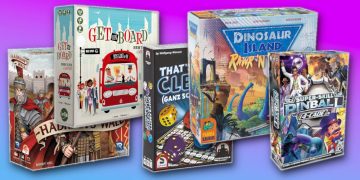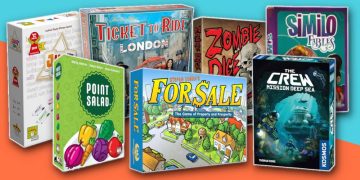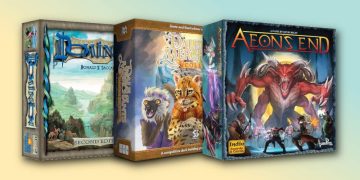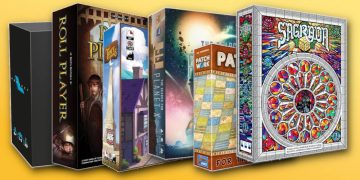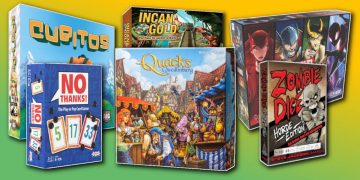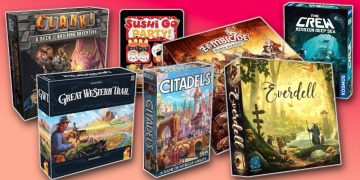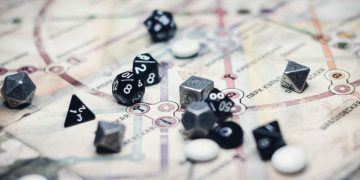Newcomers to modern board gaming are always blown away when they discover that "board games" encompasses so much more than just Monopoly, Scrabble, Risk, Clue, and Taboo.
Once you get a taste of Catan, Wingspan, Codenames, or Pandemic, the world opens up—and you may feel compelled to dive head-first into the hobby and build up your very own board game collection.
The thing is, there are now thousands of board games and combing through them all can be overwhelmingly daunting. Even ignoring all the bad ones, you still have to filter out the ones that are exceedingly niche or far too complex for someone just starting out.
For newcomers who are starting a board game collection from scratch, you'll want to try lots of different types of games to experience first-hand the immense variety offered by modern board gaming.
Here are my picks for the best starter board games and card games for anyone new to hobby. These games are great for beginners, but still have enough depth to appeal to experienced hobbyists!
15. Take 5 & Take A Number
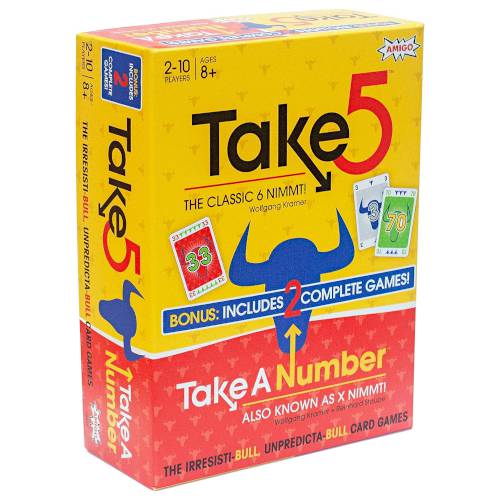
Designed by Wolfgang Kramer and Reinhard Staupe
Supports 2 to 10 players
About 30 to 45 minutes
Major genres: Card game, hand management
Take 5 & Take A Number is actually two games in one package, where both games share the same core gameplay but Take 5 is better suited to larger groups while Take A Number is better for two or three players.
The crux of both games involves playing cards to different sequences while trying not to be the one to play the final card of any sequence—because if you do, you have to take the sequence's cards.
And taking cards is bad because each collected card scores you points and you're trying to get the lowest score. Take 5 & Take A Number are both simple, easy, with just enough meaningful strategy.
14. Just One
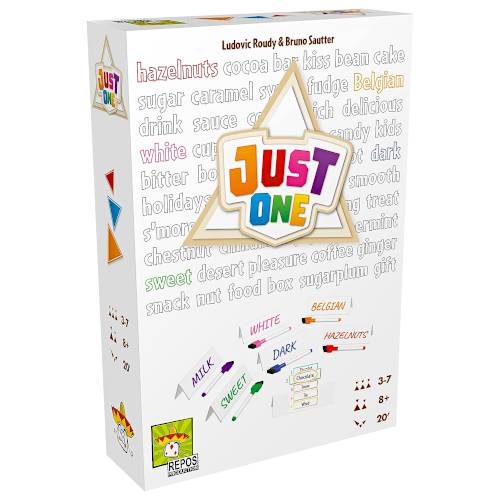
Designed by Ludovic Roudy and Bruno Sautter
Supports 3 to 7 players
About 15 to 30 minutes
Major genres: Cooperative, party game, word game
Every board game collection needs at least one party game, and Just One is one of the greatest party games of all time. It's not a laugh-out-loud game in the style of Telestrations or Monikers—it's better than that.
Just One is a cooperative word game where everyone needs to help one player guess a target word, and they do so by each offering just one word. The twist? If multiple write the same word, they cancel out and can't be shown to the player, making it much harder to guess.
It sounds really simple, but that's the beauty of Just One. It's quick to set up, easy to teach, and a blast to play with nearly any group. Even haters of party-style games tend to like this one!
13. Deception: Murder in Hong Kong
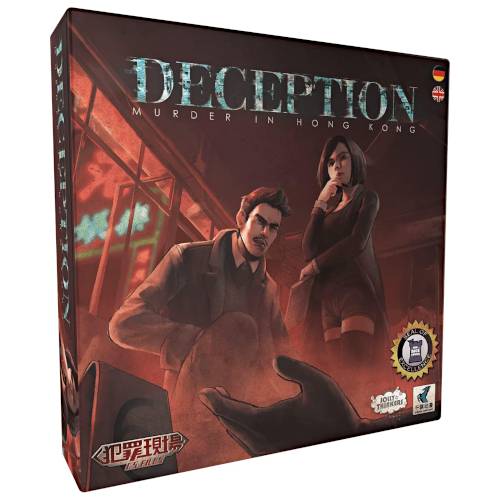
Designed by Tobey Ho
Supports 4 to 12 players
About 20 to 30 minutes
Major genres: Bluffing, deduction, hidden role
"Social deduction" has been a hot board gaming genre for many years now, often involving hidden roles, secret player goals, traitorous decisions, and the need for players to suss out everyone's identities.
But social deduction can be a polarizing genre. These games can be intensely fun emotional roller coasters, but they can also be stressful when you have the hidden role that everyone is trying to uncover.
Which is why I think Deception: Murder in Hong Kong is the one social deduction game that every collection should have.
In Deception: Murder in Hong Kong, one person is the Forensic Scientist who can't speak and must give out clues to help players select the right combination of Evidence and Means to solve the murder.
The crux of the game is trying to interpret the Forensic Scientist's clues, which are limited and open-ended. The Murderer isn't trying to hide their own identity, but rather trying to mislead the other players so they select the wrong combination of Evidence and Means.
All in all, Deception: Murder in Hong Kong emphasizes deduction and interpretation over bluffing, resulting in a game that's far less stressful and a lot more fun for everyone involved.
12. Hive Pocket
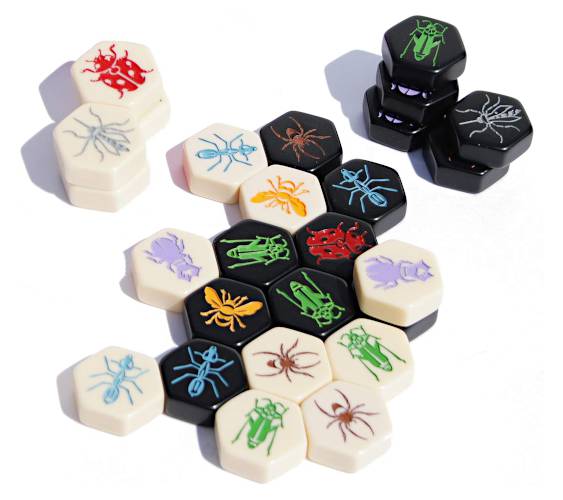
Designed by John Yianni
Supports 2 players
About 15 to 30 minutes
Major genres: Abstract strategy
Hive is the ultimate introductory board game for people who like the idea of chess but hate chess. This is a two-player, head-to-head game that's all strategy, zero luck, and easier to play than chess but still deep.
In Hive, there is no board; the pieces are the board. As you play tiles, existing tiles can move around in different ways. For example, the Grasshopper can jump over adjacent tiles while the Ant can crawl around the perimeter as far as it wants to go.
I recommend getting Hive Pocket, which is the portable version that you can play anywhere—even on an airplane. For an abstract strategy game that emphasizes simplicity, there's no better option than Hive.
11. Bohnanza
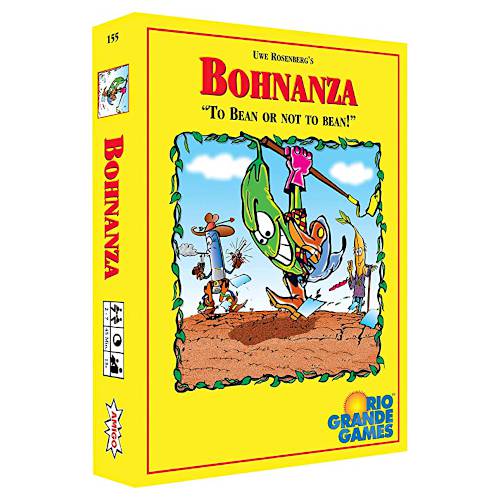
Designed by Uwe Rosenberg
Supports 3 to 7 players
About 40 to 60 minutes
Major genres: Card game, trading and negotiation
If you enjoy the idea of trading and negotiating with other players, there's no better game than Bohnanza. This simple card game is the purest form of trading and negotiation distilled.
In Bohnanza, you play different types of bean cards to "plant" them, in hopes of harvesting later for profit. But you only have three fields, and each field can only hold a single type of bean at a time.
The key rule of Bohnanza is that you can never rearrange your hand of cards, and you must always plant from the right side. If it's your turn and you don't have a field for your next bean, you must harvest one of your existing fields to make room for it.
Which means you want to get rid of beans in hand that will ruin your plans—so players are constantly trying to trade their cards, resulting in all kinds of deals as players try to maximize their trades.
10. King of Tokyo
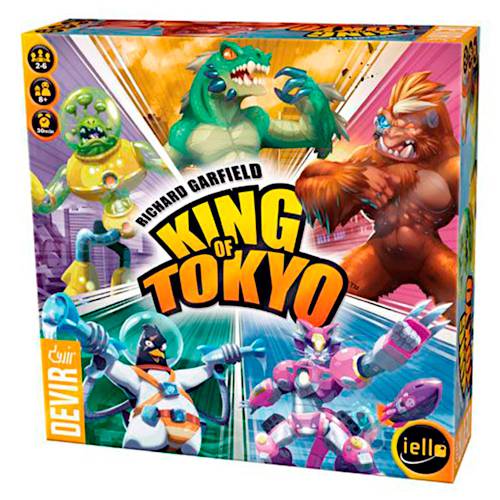
Designed by Richard Garfield
Supports 2 to 6 players
About 20 to 40 minutes
Major genres: Dice game, push your luck
There are lots of fun dice games out there, but if I had to recommend one for a starter collection, it would have to be King of Tokyo.
In this game, one player is "in Tokyo" and everyone else is "outside Tokyo." On your turn, if you're in Tokyo, you'll earn points—but when you're in Tokyo, everyone else is attacking you! And when you get hit, you can choose to leave Tokyo and be replaced by whoever attacked you.
All of this is done by rolling custom dice, and based on what you roll, you'll do things like attack other players, restore health points, or gain energy that you can use to play special action cards. You can also reroll any or all dice, up to two times every turn.
King of Tokyo is a great introduction to this Yahtzee-style dice-rerolling gameplay. It serves up a nice balance between chaotic fun and tactical decisions, and it plays quickly across all player counts.
9. Welcome to Your Perfect Home
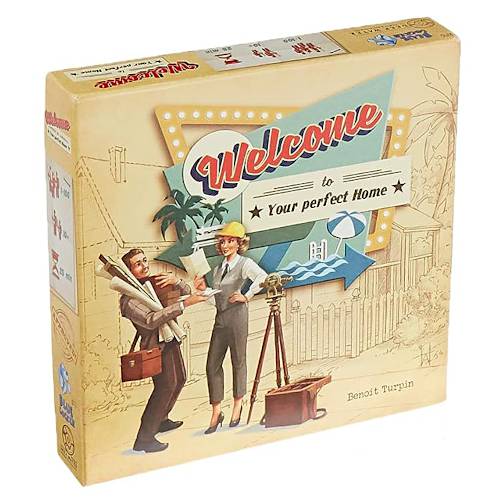
Designed by Benoit Turpin
Supports 1 to 100 players
About 20 to 30 minutes
Major genres: Paper and pencil, pattern building
Over the last few years, there's been an explosion in the popularity of paper-and-pencil games. These often involve rolling dice or flipping cards, making decisions based on the results, and recording those decisions on individual player sheets to score the most points.
Welcome to... Your Perfect Home is a must-have paper-and-pencil game in any collection because it strikes a perfect balance between simple gameplay, meaningful choices, and beautiful theme.
In this game, you're trying to complete three streets, each one being a sequence of ascending house numbers. You can only fill in one house number per round, and the number you fill in must be selected from a set of three numbers that are freshly revealed every round.
Every number is also paired with a special ability, which lets you do all kinds of things—build a fence, build a pool, increase or decrease a number, duplicate a house, etc.—that affect your end score.
Welcome to... Your Perfect Home is a lot simpler than it sounds. It plays fast, it engages players with its decisions, and it has tons of replay value because the numbers and abilities never play out the same way.
8. Mint Works
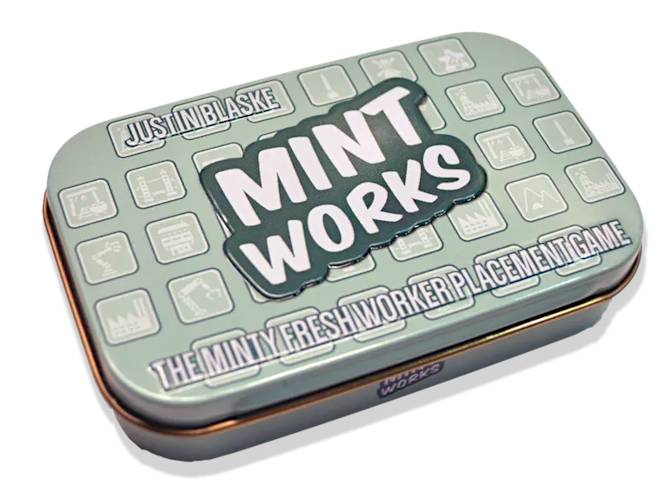
Designed by Justin Blaske
Supports 1 to 4 players
About 10 to 20 minutes
Major genres: Worker placement
Mint Works is a fantastic starter board game for three reasons: first, it's insanely portable; second, it's a meaty game packed into a short play time; and third, it's a great introduction to the "worker placement" genre.
Right off the bat, the Altoids-inspired presentation is such an eye-catcher. You can carry this tin anywhere you go, and the white token game pieces resemble mints! If anything, it's a cool conversation starter.
As for gameplay, you take turns placing your mints on different cards to activate abilities, train more workers, earn resources, or gain points. It's a quick but tense race to see who can reach 7 points first!
7. Love Letter
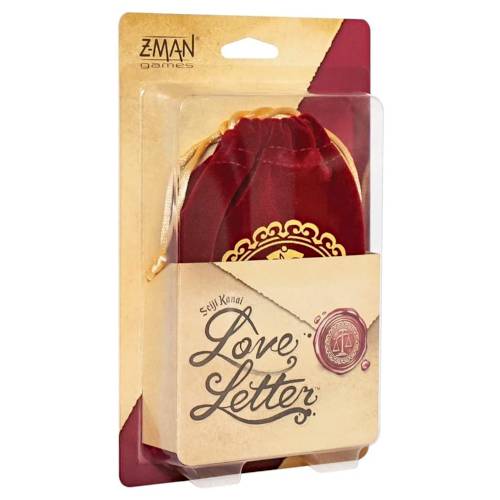
Designed by Seiji Kanai
Supports 2 to 4 players
About 5 to 10 minutes
Major genres: Card game, deduction, hand management
Love Letter is one of the simplest card games ever made, comprised of just 16 cards with values from 1 to 8 (some of the lower-valued cards have multiple copies in the deck).
You start with one card in hand and the entire game is played in "draw one, play one" fashion. The goal is to be the one with the highest-value card in hand when the deck runs out.
The twist is that each type of card has a special ability when played, like peeking at someone's hand, trading hands with someone, or naming a card and eliminating a player if they have that card in hand.
Each round of Love Letter plays really fast, and you keep playing until someone is first to win a set number of rounds.
Love Letter is a must-have in any collection because it's just so easy to knock out a few rounds no matter the circumstance. Plus, there's no setup time! It's the ultimate filler game.
6. Carcassonne
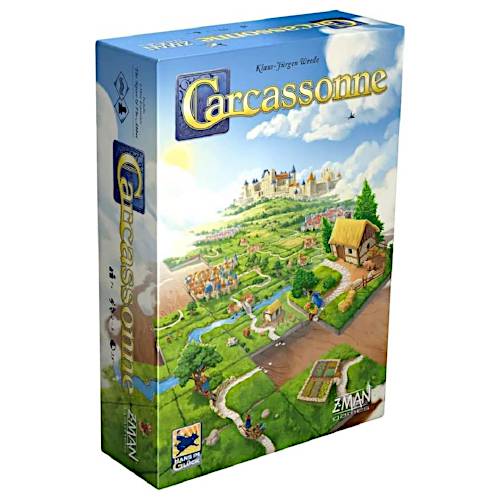
Designed by Klaus-Jürgen Wrede
Supports 2 to 5 players
About 30 to 45 minutes
Major genres: Area control, tile placement
Carcassonne has been around for more than two decades and is still beloved by many. It's a classic of modern board gaming, primarily because it appeals to pretty much everyone.
At heart, Carcassonne is a tile placement game. On your turn, you draw a random tile and add it to the board, then place one of your tokens on one of the features (e.g. road, farmlands, cities) of the tile you just added.
When an added tile ends up completing a feature—like being the final tile that creates a full road—that feature is scored based on whoever made claim to that feature while it was being built.
The "draw one, play one" aspect makes Carcassonne easy to learn and play, and the tile placement aspect is just fascinating to witness. It's a solid entry into the tile placement genre.
5. Dominion
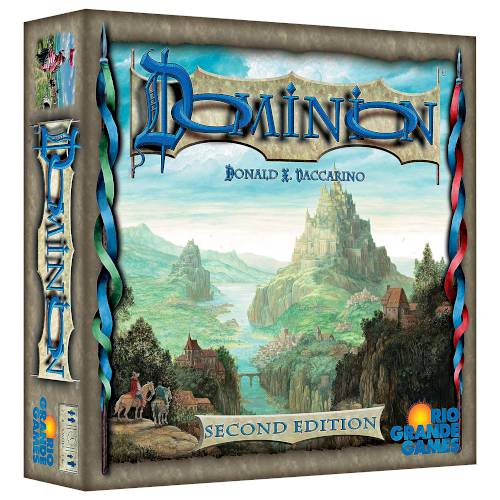
Designed by Donald X. Vaccarino
Supports 2 to 4 players
About 20 to 40 minutes
Major genres: Card game, deckbuilding, open drafting
Dominion is the father of the entire deckbuilding genre of board games. A deckbuilding game is one where each player has their own personal deck of cards that they can grow and modify during play.
To this day, Dominion is deckbuilding in its purest form. Everyone starts with the same basic deck and everyone buys cards from a shared market, but everyone's deck will diverge wildly by the end.
The goal is to acquire victory point cards, for which you'll need money cards—but drawing money cards from your deck isn't easy, so you'll also need other kinds of cards to modify and cycle through your deck.
Dominion is still one of the best games for introducing people to deckbuilding gameplay, making it an important starter game staple in any burgeoning board game collection.
4. Kingdomino Origins
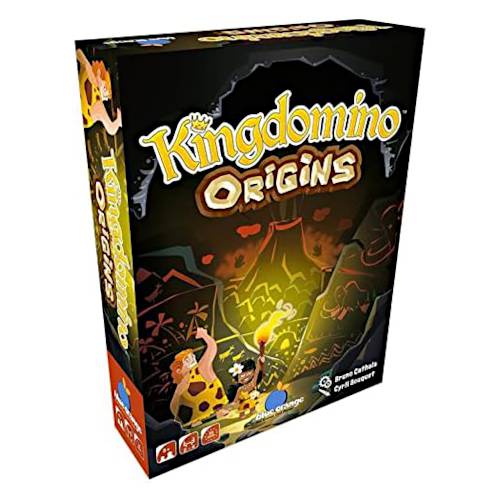
Designed by Bruno Cathala
Supports 2 to 4 players
About 20 to 40 minutes
Major genres: Open drafting, tile placement, pattern building
Kingdomino Origins is a much-improved follow-up to the original Kingdomino, which includes the original base gameplay but also includes an optional new game mode that adds a lot more depth.
The core idea of Kingdomino is that you take turns drafting from a set of tiles that you use to build out your personal kingdom—but your choice of tile in one round determines your drafting order in the next round. If you take the worst tile now, you get first pick next round!
In the base game, you're mainly trying to match tiles to create large regions of different terrain types. In the new mode of Kingdomino Origins, you also gain resources that you can spend on Cavemen tokens that grant you additional points based on your tile layout.
Kingdomino Origins strikes a fine balance between accessibility, strategic and tactical depth, and satisfying gameplay. The chunky tiles are fun to handle, and seeing your completed kingdom is just so rewarding.
Note: There's another family-style tile placement board game that's slightly different but equally good: Cascadia. Both are fantastic and you can't go wrong with either one!
3. Ticket to Ride: Europe
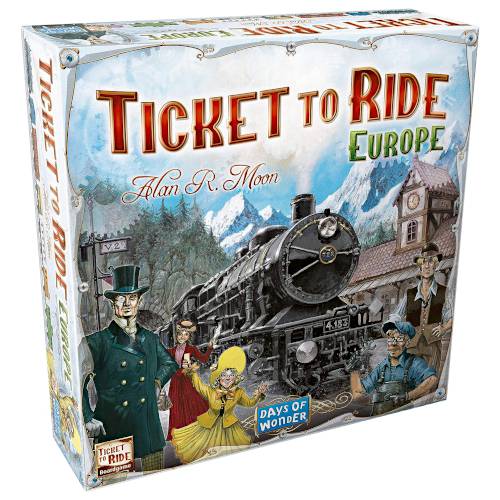
Designed by Alan R. Moon
Supports 2 to 5 players
About 30 to 60 minutes
Major genres: Contract fulfillment, route building, set collection
Ticket to Ride is perhaps the greatest board game to come out of the 2000–2005 era. Not only does it feel like a board game in the traditional sense, but it's supremely fun and engaging to this day.
The basic idea of the game is to collect sets of different train cards, which you then spend to construct routes on the map. Every player also has unique contracts, which grant bonus points if they can successfully connect different cities across the map.
Ticket to Ride: Europe takes the original game and improves on it across the board, resulting in a more refined experience that doesn't lose any of the heart that made the original so great to begin with.
What's the difference between Ticket to Ride and Ticket to Ride: Europe? Both are essentially the same game, but Europe has a more balanced map and a new gameplay feature called Stations that makes the game less cutthroat and more strategic.
2. The Quacks of Quedlinburg
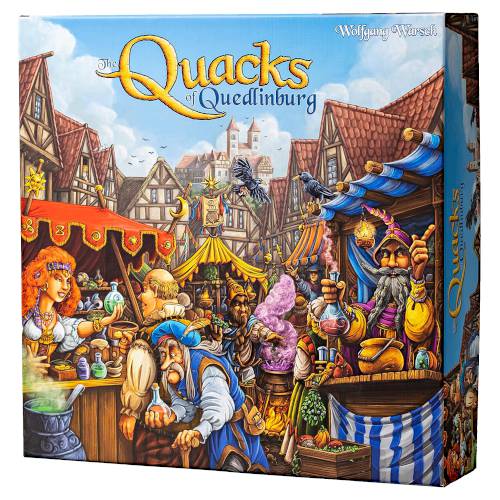
Designed by Wolfgang Warsch
Supports 2 to 4 players
About 30 to 60 minutes
Major genres: Bag building, push your luck
The Quacks of Quedlinburg was a smash hit the moment it released in 2018, and it remains one of the greatest board games of all time in terms of sheer fun, excitement, and addictiveness.
In this game, every player has their own bag of potion ingredients, which starts off with mostly bad stuff in it. Each round, players repeatedly reach inside their bags and pull out ingredients to add to their cauldron. But if you add too many bad ones, your potion explodes!
The Quacks of Quedlinburg is the ultimate push-your-luck board game, often compared to a slot machine because you're always itching for one more reach into the bag to see what you might get. Do you risk blowing up your cauldron to advance your potion a little bit more?
This is a game of risk management, of shaping your own luck, of deciding what to add to your bag to best influence your odds every round. If that appeals to you, then The Quacks of Quedlinburg is a must-have.
1. The Crew: Mission Deep Sea
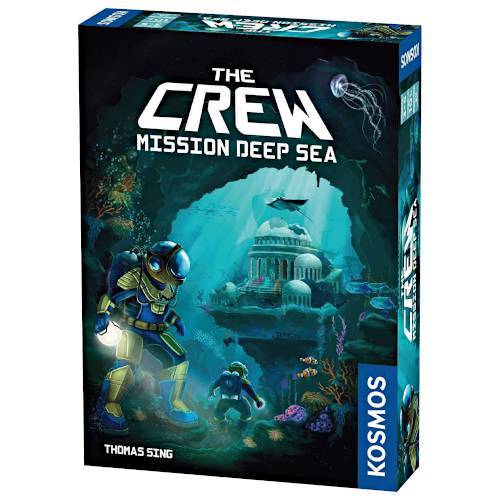
Designed by Thomas Sing
Supports 3 to 5 players
About 10 to 15 minutes
Major genres: Card game, cooperative, trick taking
Anyone who grew up playing trick-taking card games like Hearts, Spades, or Euchre understands how addictive the genre can be. How much more fun would it be to play a cooperative trick-taking game?
Enter, The Crew: Mission Deep Sea. In this game, task cards are distributed amongst all players, and everyone must work together so that every player can accomplish all of their tasks.
Example tasks: "Win fewer tricks than everyone else," "Win a trick with total value of 23," "Win every 9-value card," and "Win the last trick."
There are 96 different task cards of varying difficulties, and every game is played with a randomized combination of them, resulting in infinite replayability as players work together to win and lose tricks in the right way to ensure everyone acquires the cards they need.
And did I mention that communication is forbidden? Other than a one-time token that can be used to reveal limited information about a single card in your hand. This aspect elevates The Crew: Mission Deep Sea and puts it among the best card games ever created.
Even people who hate trick-taking card games find that they enjoy The Crew: Mission Deep Sea—the cooperative angle makes it an entirely different experience—which is why this should be a staple game in every board gamer's collection.
Level Up Your Board Game Collection
Ultimately, your board game collection is your collection. If a game doesn't grab your interest, or if you think it won't be a good fit for your own group of potential gamers, go ahead and skip it.
That said, the joy of board gaming goes beyond just the board games themselves. It's the full experience of game night—the atmosphere, the lighting, the table, the people—that brings it all together.
Once you have a solid collection, you may want to look into some useful board gaming accessories that'll further improve your game nights.
